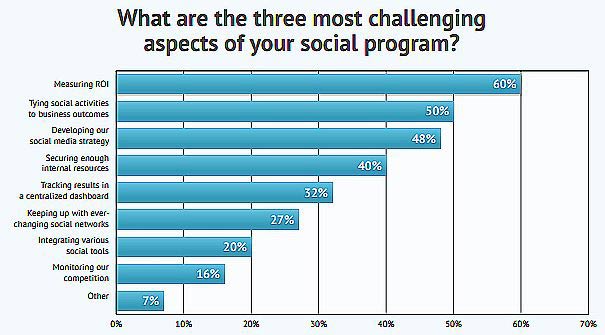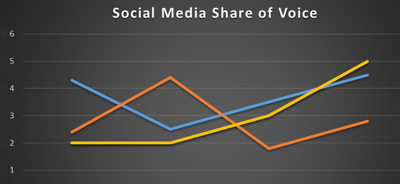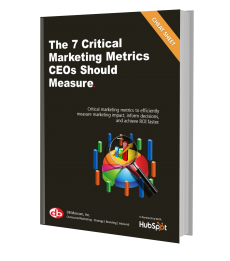Is measuring social media ROI possible?
Even though many businesses engage in social media marketing, most still find it difficult to measure the ROI generated from their social media marketing. And rightly so.
How can you measure the profits generated from the video you shared on Facebook, the Tweet you posted, or the picture you uploaded on Instagram?
What are the best social media metrics to use to truly understand if your efforts are paying off?
In a published survey and report, about 60% of businesses revealed that they had problems measuring their social media ROI, while 50% did not have any idea how to tie their social media marketing to their revenue.
There are many social media metrics that you can quantify in terms of performance. But, because there is no common denominator to calculate the ROI, measuring the effects of social media marketing is a challenge.
In this post, we will discuss some of the most important social media metrics that you should measure. And, we’ll show you how to use those values to track your social media ROI.
Social Media Metrics to Measure
1. Reach
Reach is an estimate of how far your message has disseminated. It is an old-school trick, and is not entirely accurate, but is still vital to help you understand your audience. You can measure your reach by tracking the number of your followers and fans on social media, your impressions, and your social media traffic information. Your reach may not give you a completely accurate profile. But, when compared to other metrics, like clicks, comments, and retweets, you can better measure your engagement metrics.
Which brings us to…
2. Engagement
Engagement metrics provide qualitative answers about your social media worth. Engagement can be measured using these KPIs:
- CTR’s: Click-through rates can determine if your post engaged your audience enough to be clicked. This measurement indicates how compelling your content is to your target audience or their interest level in your post.
- Bounce Rate: CTR’s are an important metric, but become even more informational when compared to bounce rate. The bounce rate measures the percentage of page visitors who leave your website after viewing only one page. The idea is to attract targeted prospects and get them engaged with other content on your site until they convert. Comparing bounce rates for social media visitors compared to other website visitors helps you understand if your social media targeting and content strategy are effective.
- Comments: Comments are only triggered by content that engages the users in communicating with you. Thus, a high number of comments reveal that you are moving in the right direction. Comments are also valuable as a tool to measure the pulse of your audience in terms of satisfaction and brand advocacy.
- Likes: Increasing the number of likes signals an increased engagement of users. If there is a post or link that has been liked by many people, it will be available to more people. For instance, on Facebook, if an individual likes a post, it is viewable by their circle of friends, who can like it also.
- Mentions: Check-ins or other brand mentions are vital to show that your brand is relevant. This metric shows how much people are talking to, and about your business on social media.
- Share-of-Voice: Going beyond mentions, share-of-voice (SOV) helps you track what percentage of mentions within the industry is about your brand. And, what percentage is about your competitors. Higher SOV metrics can indicate brands that are perceived as thought leaders in their industry.
- Shares: Sharing a post shows that your content accomplished the task it was meant to do. To get the attention of a user and prompt them to take conscious action. Sharing also indicates the post content was deemed relevant enough for your audience to take the time to share with their audience.
- Amplification Rate: This metric goes beyond the share metric to measure the ratio of shares per post to the number of overall followers. In other words, your post is shared by your target audience, who in turn share it with their audience, who in turn share it with their audience. The amplification rate measures the ripple effect of your message. You can use shares, retweets, repins, or a combination. Take your desired metric during a set period, divide by your total followers (or page likes), and multiply by 100 to get your amplification rate.
- Visits: Although the end goal of social media metrics is not to measure eyeballs, the number of visits does play a key role in developing your formula for engagement. As your visits go up, your engagement metrics should follow. If this isn’t the case, then your content should be tweaked to resonate more with your target audience. Engagement metrics allow you to zoom into the response of your target market and understand if the content that you are providing is piquing their interest or not.
3. Conversions
Your reach and engagement will help you find out where you stand in terms of brand awareness. If you have a high level of engagement, and your reach is solid, too, it will prove that you are popular…but what about profitable?
Engagement is an important part of the process of communicating with your target market. But when it comes to asking them to buy your products or services, how many of your followers would follow through?
Tracking your conversions, you can find out which social media platform generates the most conversions. When you then factor in your acquisition costs for these conversions, you are much closer to having a true ROI picture of your social media efforts.
How to Know Your Social Media Metrics Really Matter?
1. Identify Your KPIs and Assign Value Accordingly
Every business has unique needs. Some may use social media metrics to focus on brand awareness, while others may focus on generating profits.
If you are focused on brand awareness, then you should measure the engagement and the influence that your brand receives. On the other hand, if you are focusing on sales, then you need to put a price on each of your conversions to identify your social media ROI.
2. Google Analytics is Your Friend in Need
Not only should you focus on converting consumers, but you should also keep a track of retaining those customers. Google Analytics helps you measure all your social media metrics, goals, and results.
3. Compare Your Conversions Against Your Competitors’
Your competitors can provide you with valuable data to help you grow. Compare your social media marketing efforts with that of your competitors, and map out the conversions to see where your brand lies. If there is a competitor for whom social media marketing is working well, look at what they are doing right, and try to incorporate some of their tactics into your strategy.
Try using a share-of-voice metric to compare the social budget and engagement of your competitors and your own. Then use these results as a benchmark for your growth. There are free social monitoring sites such as SocialMention, a free tool from Brand Mentions that allows you to track and measure what people are saying about your brand anywhere on the globe, in real-time.
Don’t fret if some of your competitors lie on the higher end of engagement and conversions. The most important thing is to understand your shortcomings, then implementing a strategy to generate more social media ROI.
4. Compare your Social Media Conversions to Other Channels
Having a clear picture of the social media metrics that matter most for your brand is only a part of the ROI exercise. Knowing which channels are providing the most cost-effective conversions will give you a complete picture of your overall marketing activities. For example, your reports may indicate that paid search is driving the highest volume of traffic to your website, but have a lower conversion rate.
When you calculate the ROI for each channel ([return-investment]/investment), you may find that one channel isn’t necessarily driving the most traffic, but is returning a higher volume of paid conversions. Adding Customer Lifetime Value calculations to your analysis will provide a robust picture of the highest ROI activities and thus enable data-driven decisions and better resource planning.
Looking for more information on marketing metrics?
Download this free ebook “7 Marketing Metrics CEOs Should Measure” to help you:
- Get accurate metrics for more informed, data-driven decisions
- Reduce unprofitable marketing costs
- Increase productivity and speed to market
- Focus on high-payoff activities
How Can DB Marcom Help?
Here at DB Marcom, we are devoted to providing our customers with a social media strategy that is crafted to their specific business and needs.
If you wish to learn more about ways to improve your social media ROI, or are looking for a reliable service that would do the job for you, reach out to us today, and our experts will help you out.






One Comment